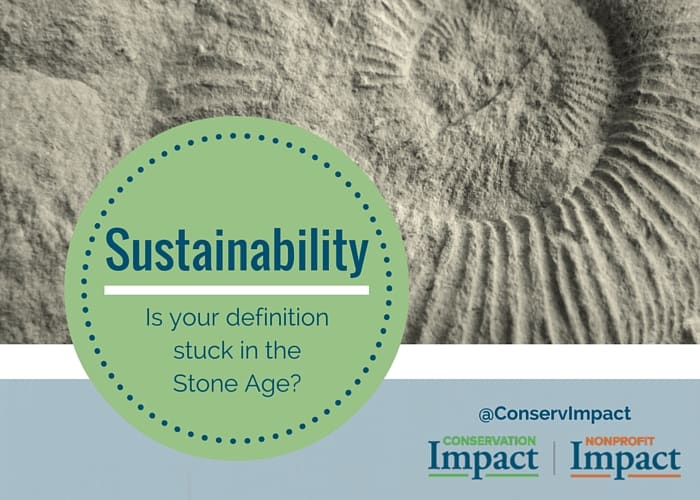
The Evolving Definition of Sustainability
Sustainability continues to be a hot topic for all of our clients.
While we still frequently hear the leaders of organizations, agencies, and programs talk about sustainability as synonymous with funding (it’s not), we are also seeing signs that a more holistic definition of the term is being adopted. The definition we continue to use is:
Having the human, financial, technological, and organizational resources to provide services to meet needs and attain results toward mission on an ongoing basis, and requiring the organizational and programmatic infrastructure to carry out core functions independent of individuals or one-time opportunities.
A definition like this blasts through the misconception that sustainability equals money and acknowledges that there is a lot more to moving towards a more sustainable future. It also helps organizations and agencies pay attention to the factors beyond just funding that might affect their sustainability.
Three Examples:
- I recently interviewed a manager who delivers programming across a large rural county with the help of volunteers. When I asked her, “What else should we keep in mind regarding sustainability?” her answer was, “I do worry about money. But I worry more about who will deliver this program after I retire. That’s a few years away, but I’m constantly on the lookout for people I can cultivate and send to training so that there are more people than just me who are accredited.”
- In a training on sustainability with representatives from a number of Native American tribes, the conversation in response to the question, “What does sustainability mean to you?” lead to a rich, powerful discussion of how sustainability for the program could only be considered in the context of tribal health and wellbeing as a whole.
- In an interview with a foundation representative about a promising program that stands to have access to an ongoing stream of government revenue (in a couple of years!), the question focused not so much on how to fund the program in the meantime, but what kinds of infrastructure and systems needed to be built now so that the program could get to scale quickly once that new revenue stream dropped into place.
Conclusion
These examples illustrate how a more holistic, comprehensive understanding of sustainability starts to change our conversations, what we pay attention to, and what we focus on building. To read applying this broader definition of sustainability, check out our article, The Path to Program Sustainability.

